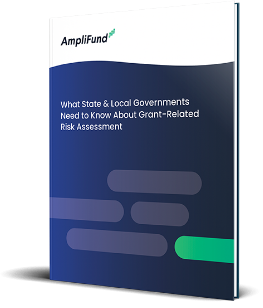What does Uniform Grant Guidance (UGG) mean for the future of grant auditing? Outlined below are specific requirements auditors will look for when determining compliance.
Understand the Audit
Federal awards received after Dec. 26, 2014 must comply with UGG auditing requirements found in Subpart F of the Super Circular. These requirements replace those previously found in A-133.
The audit holds nonprofits, government entities and educational institutions accountable for spending and programmatic performance.
However, there are some key differences between UGG and A-133 requirements. Most notably, organizations that expend more than $750,000 in federal funding are required to undergo a single audit. This is up from the $500,000 threshold previously in place under A-133. The type A program threshold was also raised to $750,000 from $300,000.
Meet Compliance Requirements
If a third-party audit is required, auditors will evaluate:
- Activities allowed or unallowed. Requirements will vary, but organizations must adhere to grant agreements that pertain to the individual program.
- Allowable costs and cost principles, or the legitimacy of an expense against what is permitted under the grant. Note that UGG standardized how direct and indirect costs are handled.
- Cash management, or how effectively cash coming and going from your organization is managed. Includes complete cash transaction reports and monitoring of funds distributed.
- Program income. All gross income of projects directly generated from federal funding must be recorded. This is typically deducted from program outlays.
- Programmatic performance. Grantees will need to focus more on programmatic performance than they previously have with audit requirements. Enhanced performance data increases spend accountability and transparency.
- Performance management system. In addition to performance data, organizations will be evaluated on the performance management system they have in place. Systems should actively manage grant performance and hold parties accountable for spend and activities.
- Sub-recipient monitoring. Organizations that distribute funds must diligently track sub-recipient activities and spend. Awarding agencies are accountable for sub-recipient data and performance.
Overall, organizations will be expected to establish a performance-driven grants management system that enables them to demonstrate proper spending.
Focus on Detailed Documentation
To demonstrate that you are spending awarded funds appropriately and seeing results, develop an audit-focused grant management strategy. This starts with detailed documentation of grant-related information, such as:
- Project timelines, deliverables and milestones.
- Program income and budgets.
- Sub-recipient activities.
- Status of funds spent.
- Financial expenditures and budget narratives.
Run internal reports throughout the grant lifecycle to ensure data accuracy, adequate progress compared to spend, and performance. Also establish internal controls to reduce legal liabilities, and help achieve desired budget and performance goals.
Want to learn more about changes in federal grant requirements? Download our guide, “What to Know About Changing Federal Grant Regulations.”
*Photo by Prathan Chorruangsak from Canva.





